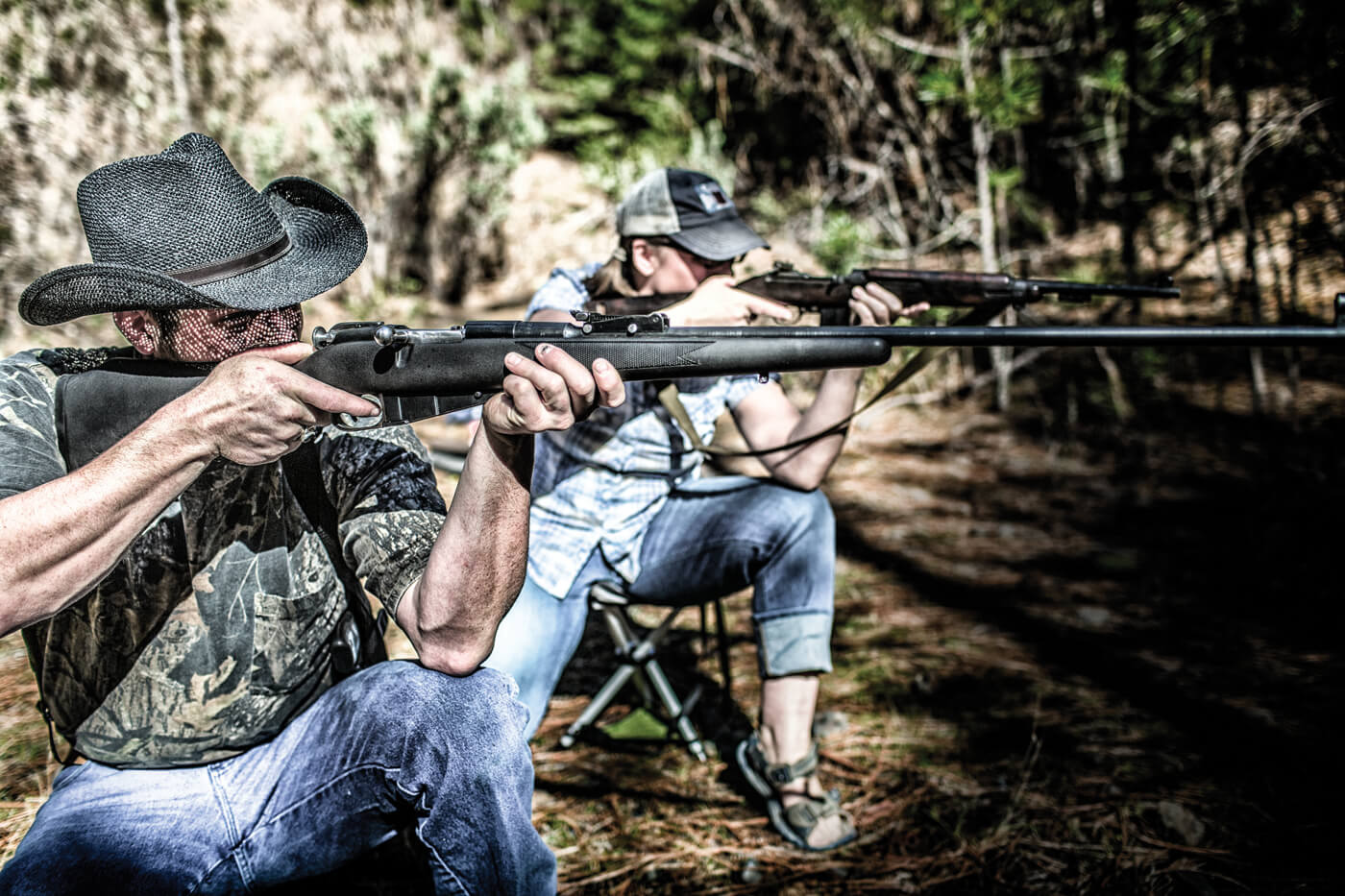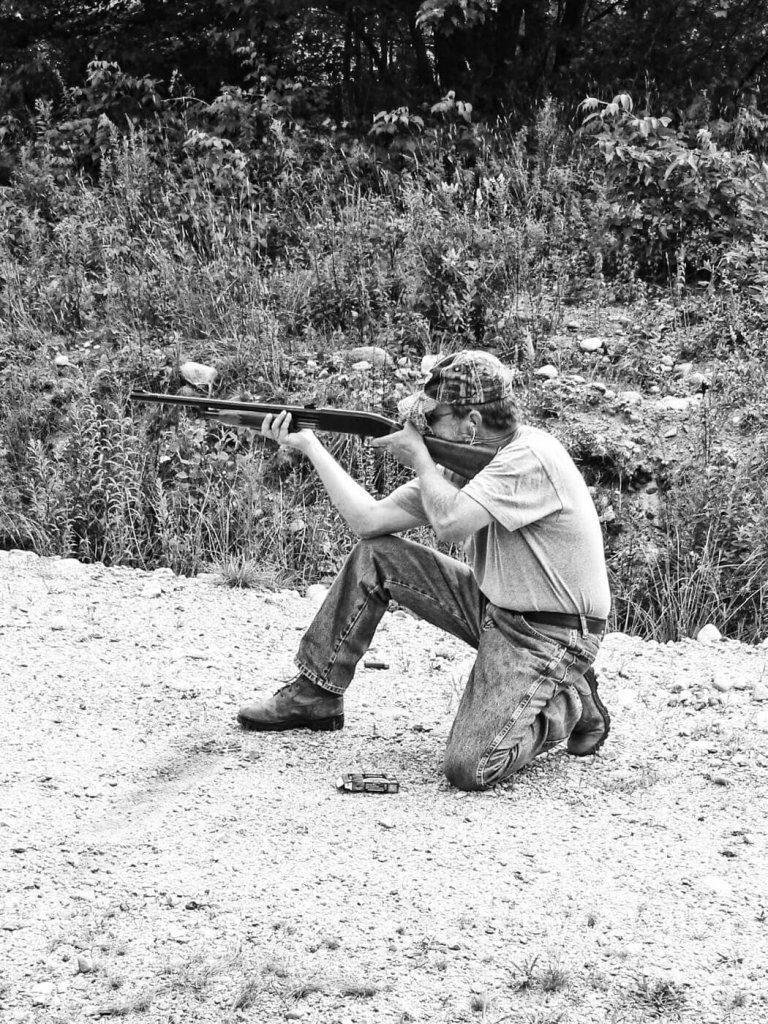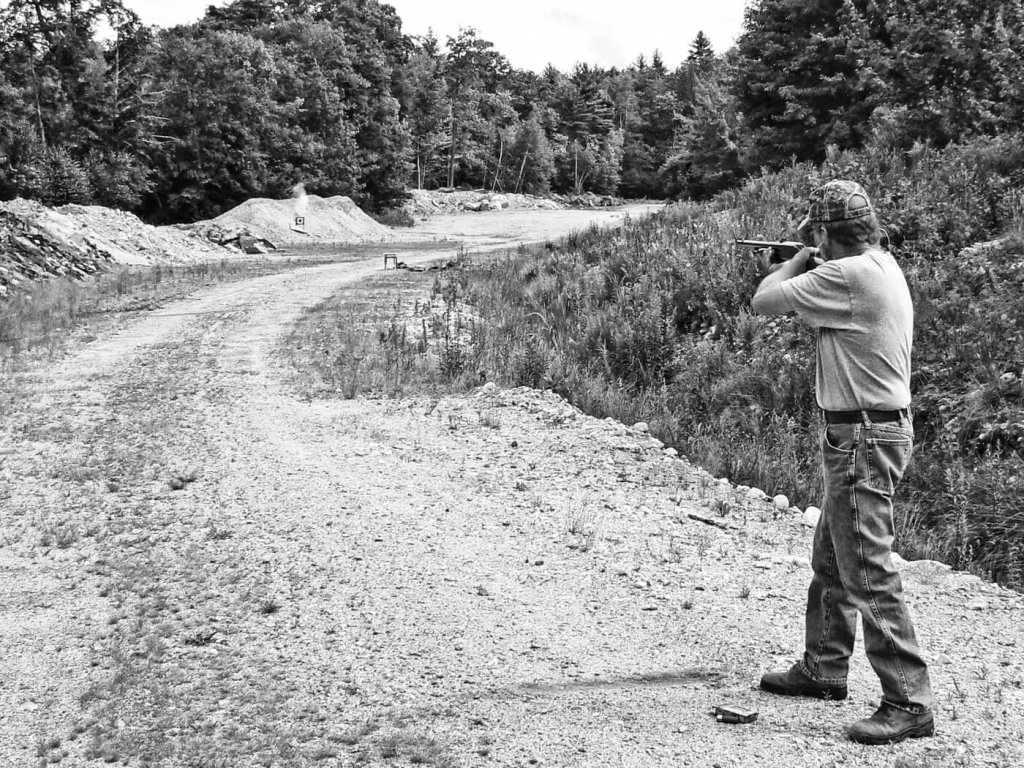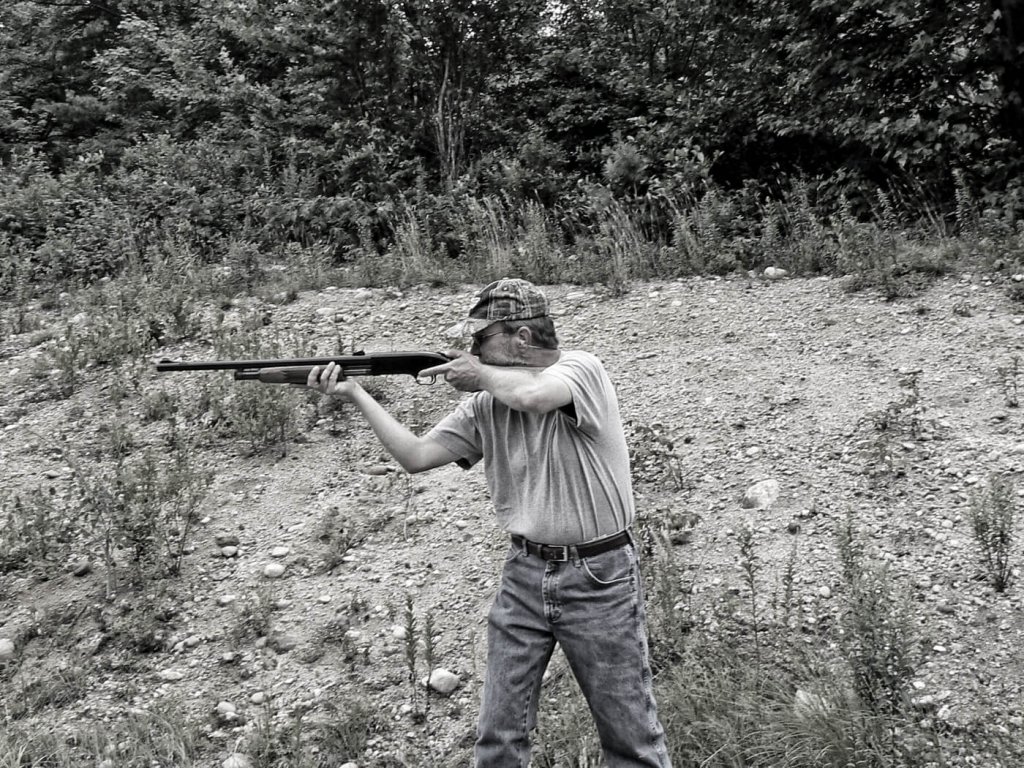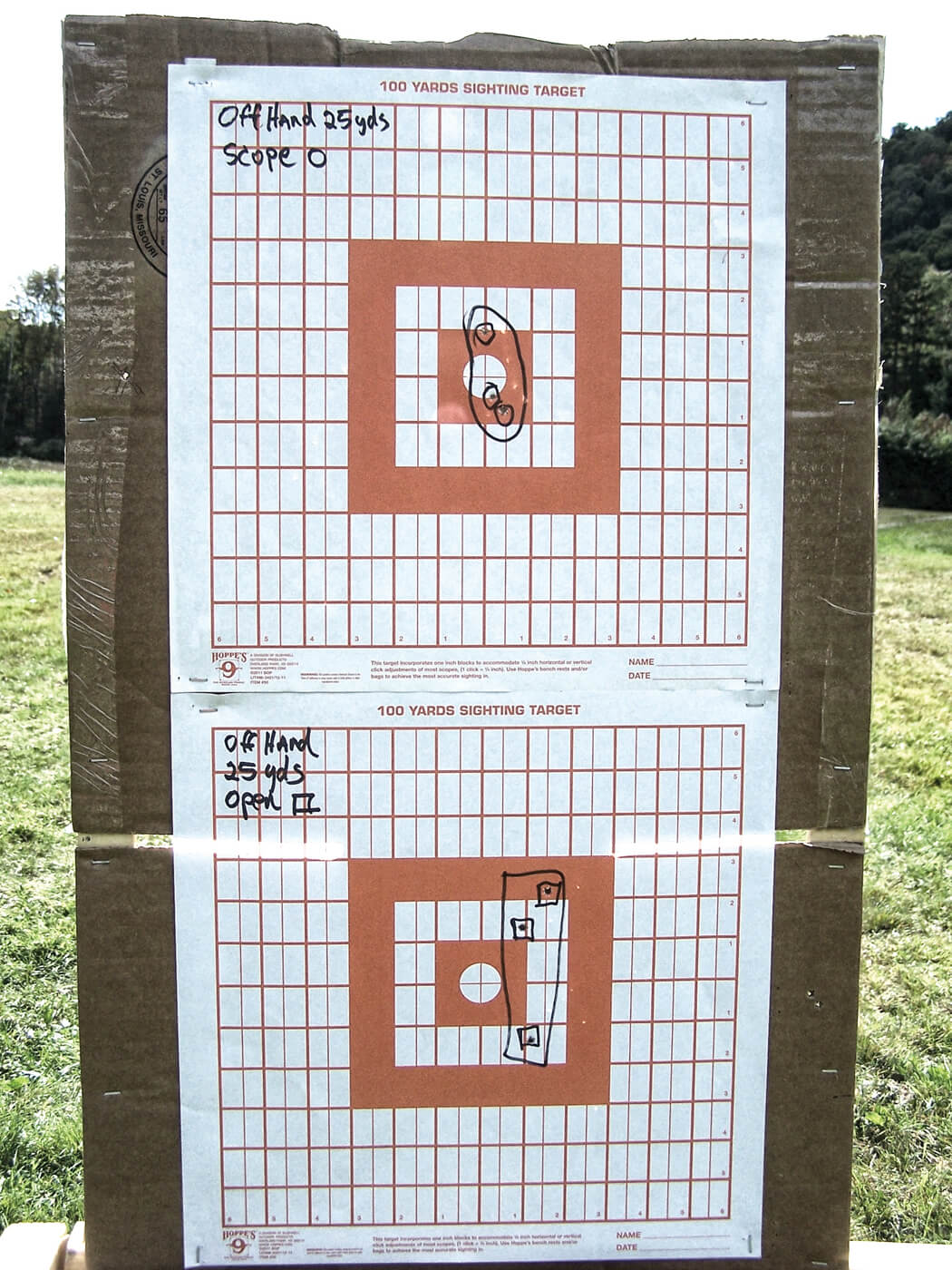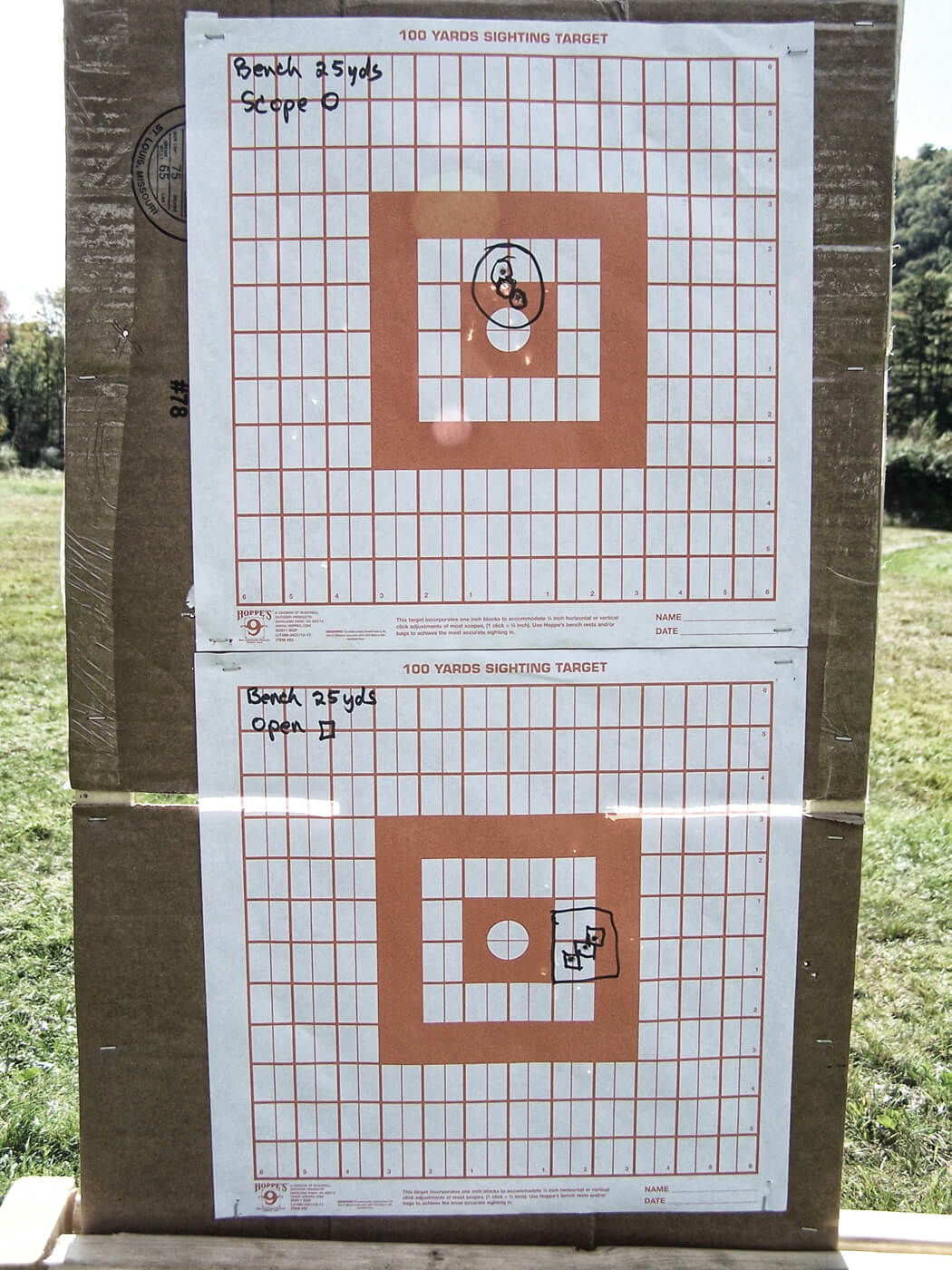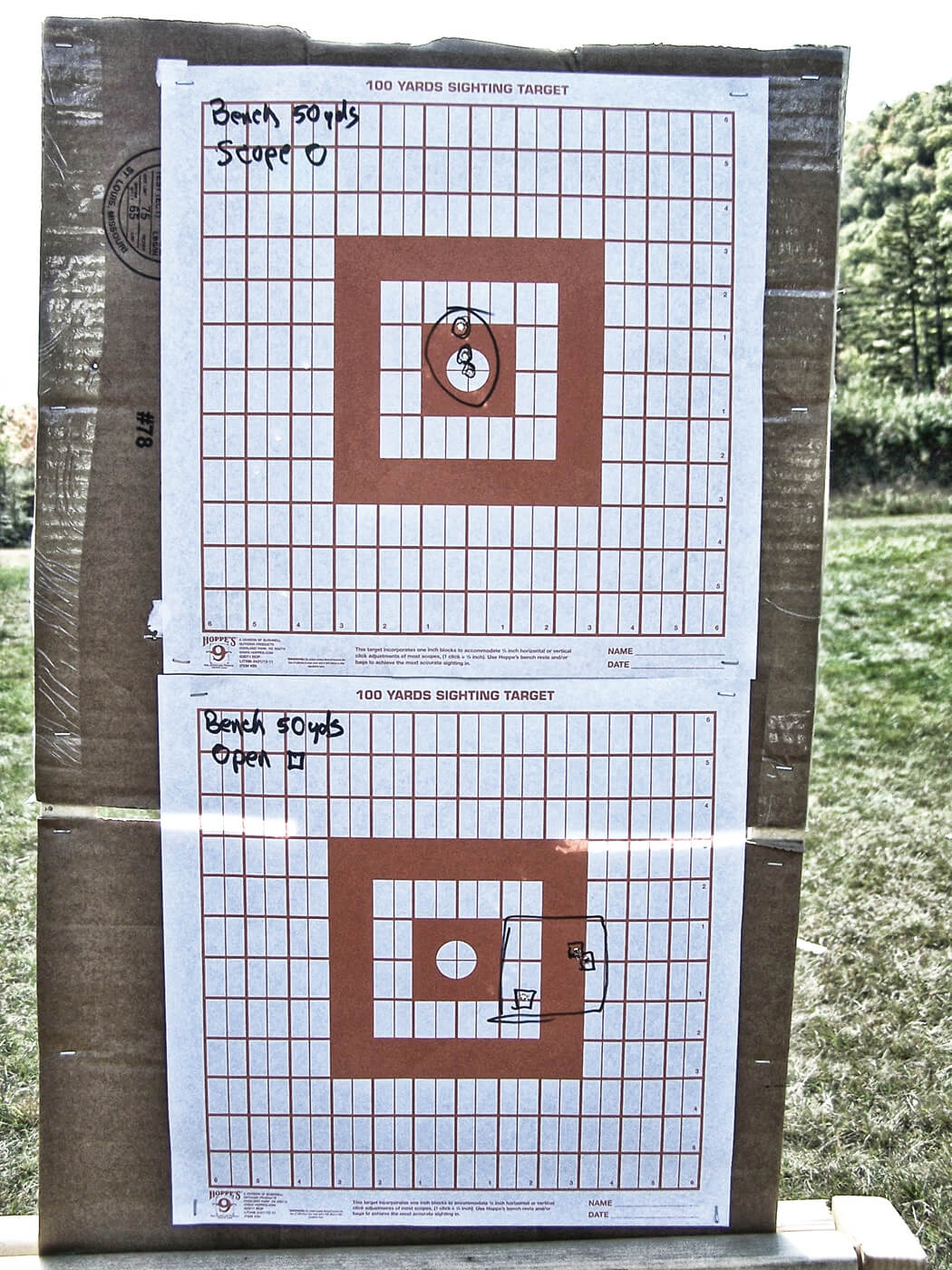Survival shots, or, shots using irons in lieu of scopes is a topic reserved for more experienced shooters and writers. There are many helpful articles being written about some really good rifles and shotguns by some of the best writers around, and I enjoy reading them all. The only thing I can find wrong with many of them is that they tend to give the reader the impression that you need a scope to make accurate shots, especially in survival situations. While I have used scopes in my time —and they have their place—I have found that I do better without them. I rely instead on the factory-mounted open sights.
EXPERIENCE OVER EXPEDIENCY
I have been around firearms my entire life but started shooting when I was about 9 years old. I started with my father’s old Stevens bolt-action .410 shotgun to hunt grouse and deer behind our home. My first rifle shooting experience was with my brother-in-law’s old, Italian military surplus 7mm. I learned all my rifle basics on that rifle. I spent many a day shooting woodchucks—and I did it without a scope. Looking back over the past 50 years, I can count on one hand the number of times I have used a scope.

My friend uses a scope on his rifles and shotguns simply because his eyes are not what they used to be, even with corrective lenses. But I have a feeling that the majority of people mount scopes on their firearms because of the hype associated with them. Some rifles don’t even come with open sights anymore, forcing the gun buyer to purchase separately a scope of some sort. I recently went into a local gun store and noticed that many of the AR models being sold did not have open sights on them. The same was true for many of the .30-06 and .308 bolt-action hunting rifles. Why is that?
When I learned to shoot, scopes were not that popular with the average gun owner. Scopes were something for rich people, snipers and those hunting large game (elk and mountain goats, for instance) in places such as Montana and Wyoming, where long shots are common. I grew up in the woods of New Hampshire, where a shot of 100 yards was (and still is) considered a long shot. Most deer and bear hunters are going to shoot at 75 yards or closer. These are distances that do not require a scope.
Growing up, we learned how to mount the rifle and quickly pick up the target. Being able to get the proper sight picture was something we learned through constant practice. Over time, it all seemed to become second nature, and all the steps were accomplished in one movement.

I joined the U.S. Army in the late 1970s. During my entire 12 years, my weapon was the M-16. Those rifles were not equipped with scopes. We all had to learn to shoot targets at various distances using the peep sights. We also learned how to hit moving targets. Our lives depended on all of us being able to do so. Only snipers had rifles with scopes. When scopes became more readily available, it seems everyone had to have one. Scopes did to shooting what the GPS has done to compass and map reading. Scopes have made many people good shooters, but many of those people fail to learn the basics of shooting. I’ll bet many couldn’t hit the broad side of a barn without a scope. It is just the same with the GPS: Most people rely so much on their GPS that they can’t traditional rifle or my shotgun with a rifled barrel.
“While I have used scopes in my time–and they have found their place–I have found that I do better without them. I rely instead on the factory-mounted open sights.”
Another issue hunters have to deal with is the sensitivity of scopes. A friend of mine told me a story about how he sighted-in his .35 lever-action Marlin. The scope was perfect, and his shots were dead on. He put the gun in the corner so he could just grab it for his morning hunt. It seems that sometime between sighting it in and the morning of the hunt, someone had moved the rifle and must have bumped the scope. A very doable 100-yard shot became a miss. Open sights don’t go out when the gun is bumped.

Moving to small game, it is much the same. I constantly see squirrel and rabbit hunters using scopes on their .22s. If you have ever hunted these critters, you know that very rarely are they sitting still. Once again, they are moving targets. With practice, you can learn to pick up those moving targets quickly … using your open sights.
SURVIVAL SHOT: SELF-DEFENSE
No two self-defense situations are ever going to be the same, but there are a few things that are going to be common. First, things are going to be moving fast. People will be moving, your head will be racing, and the adrenaline will be pumping. Second, most of your shots will be tight in. You will not be nestled in a distant tower, sniping away. Things will be up close and personal. A scope will be a hindrance. In this type of situation, you need to pick up your target fast, squeeze off the round and then pick up the second—or even third target—if there is
one. There is no time to waste trying to find your target in your scope.
LOW LIGHT
What makes a scope work is the amount of light that passes through its lenses. So, what happens in a low-light situation? Overcast days, dawn, dusk and thick woods will all affect the workings of the scope. Now, I know you are asking, “Doesn’t low light affect open sights, as well?” Sure, but there are important differences. With open sights, you are relying solely on the eye, not the one with a sensitive piece of glass in front of it. Your eyes can quickly adapt to changing light; the scope can’t.
When that deer, bear or boar suddenly appears at 30 yards, you aren’t going to have time to fumble around with the scope.
“Don’t opt for a scope because of the hype. Analyze your particular needs, ask questions, and make an educated decision.”
SIGHTING IN
Very few people can take a firearm right from the box and hit what they are aiming at on the first try. That goes for whether you are using a scope or open sights. While the factory usually has the sights down pat, it doesn’t take into account whether you are a right- or left-handed shooter, how you hold the firearm or any other factors.
In order to hit what you are aiming at takes time on the range and getting to know your firearm. The sights are adjustable, so adjust them as needed. Whether your firearm is for self-defense or hunting, it should become an extension of your arm and eyes. It should feel comfortable when you mount it to your shoulder.

You shouldn’t have to move it around a great deal in order to get a good sight picture. There should be one fluid motion from mounting the gun to finally squeezing the trigger, and that only comes with experience gained over time. So, take your firearm and a few boxes of ammunition to the range and get to know your gun and how it works.
Your firearm is a tool. The easiest thing you can do to make sure it stays in top working order is to keep it clean. Before you do anything, make absolutely sure it’s unloaded. Don’t just remove the magazine; also check the chamber.
Remember: Safety first when dealing with any firearm. Next, you should read and understand the owner’s manual for your firearm. If you bought a used gun and it didn’t have the manual, you can usually get one from the manufacturer. The manual will provide information and recommendations regarding what types of products to use on your firearm. Use quality products when cleaning your firearm. You wouldn’t use off-the-wall products in your home or car would you? 
Maintaining your firearms should be no different. There are many good products out there, but I usually opt for products put out by Shooter’s Choice, Hoppe’s and Outers. When I am done cleaning, I always spray my firearms with GetSome 1000 lubricant. It is a non-petroleum-based product, thereby making it safe on both plastic and metal parts. It also helps repel moisture.
Ammunition is expensive. Despite this, it is very important to go to the range. The more you shoot your firearm, the better you will get at it. The big question is, Do you use your hunting/defense rounds on the range, or do you use an alternative?
The simple answer is that it all depends on what you are shooting. For sporting clays, I like to use the same ammunition I would use in the field. The same goes for my rifles. Pistols, however, are a different story.
I never use my personal-defense/hunting rounds when I take my .45 to the range. Those rounds are just too expensive. Instead, I use full metal jacket (FMJ) rounds. Because these bullets are much less expensive, they are perfect for the range.
Thankfully, Federal Ammunition sells the Practice and Defend package. This package gives the
shooter 100 rounds of FMJ and 20 rounds of the company’s HST defense rounds.
SCOPES HAVE THEIR PLACE
If I ever find myself hunting pronghorns, elk or deer in places such as Wyoming or Montana—where long shots are the norm—you know full well that my rifle will be equipped with a scope. The same holds true for hunting boar at night: You need a night vision scope attached to your firearm.
With the type of hunting I do—and for self-defense situations—in my opinion, a scope is not needed and, in fact, could become a hindrance. Whether to use a scope or not is up to the individual and their situation. Don’t opt for a scope because of the hype. Analyze your particular needs, ask questions, and make an educated decision.
Editor’s note: A version of this article first appeared in the February 2017 print issue of American Survival Guide.


